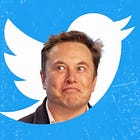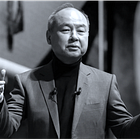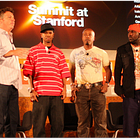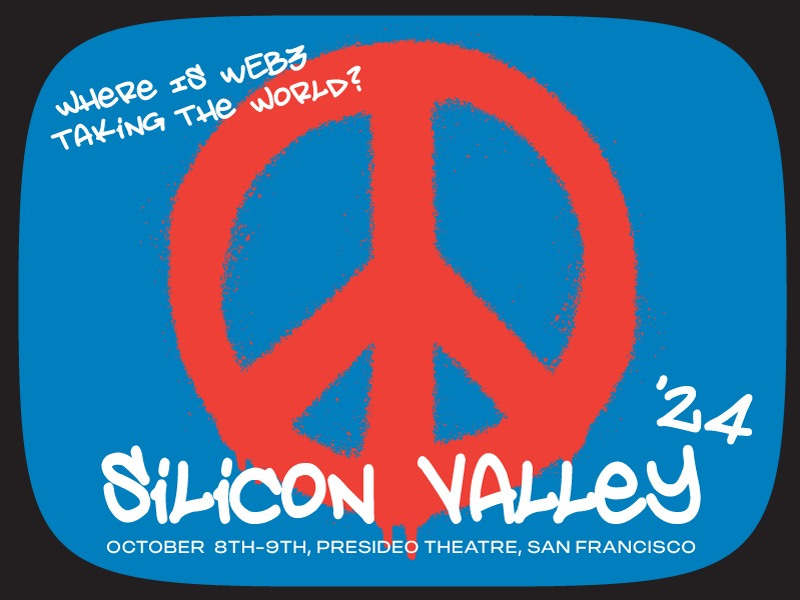The top Robot, Autonomous Vehicle & Drone private companies for 2025—Google dethroned, Elon at face value, and more groovy stuff...

Skip past the editorial to see the list of the top 50 private robotic, AV/EV, and drone companies and their current valuations. We are looking forward to your recommendations.
Surviving the next chapter of creative destruction
Silicon Valley is in the business of creative destruction. We eat our elders to make life for the next generation more self-empowered and convenient than the last. The PC ate every computer between it and the mainframe and your ‘secretary.’ The Internet then dethroned (momentarily) the Almighty Microsoft which maintained (not always nicely) a monopoly on the PC industry.

Our bet is—as we included in our predictions for 2025—Google, BigTech’s latest ‘monopolist,’ will be the biggest turkey roasted during Web3. Note to the DOJ: We take care of the monopolies we create, thank you very much.
Google search is, of course, not dead. Google still dominates the search engine market, holding over 92% market share by processing approximately 99,000 queries every second. But AI search services such as our favorites—xAI's new Grok3 search and Perplexity.ai—are starting to eat the search Goliath’s breakfast. In fact, industry analysts are already forecasting that Google's share of the US search will tank below 50% by 2025.😳 GenAI search collapses the number of Google clicks it takes you to get to what you want.
GenAI apps cut our staff's research time by at least 70 percent, and we produce much better content. We haven't used Google search for over a year, and we could not be happier. 😎🤙🏼
During each chapter of Silicon Valley innovation, the question is always—Will our innovations end up destroying more jobs than we created? To cite one source, a study by McKinsey in 2018 estimates that between 1980 and 2015 the US roughly lost 3.5 million jobs due to the rise of PCs and the Internet, with many of these losses concentrated in clerical and administrative positions. However, the same report calculated that the PC and Internet created over 19 million new jobs during that same period—a net gain of about 15.8 million. These new roles, such as software developers, IT specialists, and web designers, didn't exist before.
Here come the Bots
You will learn below that at least Elon believes that between AI and robots, there will be no jobs left for any of us humans. The combination of AI + robots does have a double-disruption vibe to it, so rightfully, there is lots of fear and loathing over the impact it will have on the employment market. No one has a perfect crystal ball, but we will stick with the historical record that shows that all innovations that foster a better world, that is, faster, cheaper, and/or more convenient, are net-positive job creators.
‘In a benign scenario, probably none of us will have a job. There will be no shortage of goods or services. If you want to do a job that’s kinda like a hobby, you can do that, but otherwise, AI and the robots will provide any goods and services that you want. There will be a need for ‘universal high income,’ as opposed to ‘universal basic income.’ The question will really be one of meaning – if the computer and robots can do everything better than you, does your life have meaning? I do think there’s perhaps still a role for humans in this – in that we may give AI meaning.’
—Elon Musk @ VivaTech 2024
We are not alone. The World Economic Forum’s 🙄 Future of Jobs Report 2025 projects that 170 million new jobs will be created by 2030, with 92 million displaced. Further, PwC’s 2024 Global AI Jobs Barometer forecasts AI-impacted sectors will experience 4.8x higher productivity growth, with a $15.7 trillion economic impact by 2030, and AI jobs carrying a 25 percent wage premium.
The bottom line is that 150 years ago, the average American lived on approximately one dollar a day in today's currency. Driven by innovation, global per capita GDP expanded 13-fold between 1820 and 2016, indicating a substantial increase in material wealth and a dramatic rise in the average standard of living. However, this remarkable increase in material wealth has not been without environmental costs and disruptions in societal and family structures.
The increase in material wealth hasn’t been so good for our health. In the 1930s, obesity was relatively rare. Today, the US obesity rate is 43 percent, up from 13 percent in the early 1960s. Industrialization has also had a substantial negative impact on our environment, affecting air, soil, and water quality. We are not so worried about long-term jobs and wealth creation; we are more concerned about harnessing AI and AI robotics to take better care of our bodies and Mother Earth.
Taking Elon at face value
In the business of journalism, as it still exists, the most precious content one can deliver comes out of the mouth of the people who matter. In our business, the people who matter are the entrepreneurs who have the reins to innovation and business at the highest level. What these folks utter is primary source material and the content historians will give the most credence when looking back on this era. Another principle is to try not to judge people as if we have traveled to every corner of a person's soul and know all their true intentions. Our job is to be skeptical, yes, but not cynical. Wild, often untrue, speculations and harsh personal judgments with no personal knowledge are the order of the day in Corporate Media, and that is why that business died in 2024 and was replaced by citizen journalism.
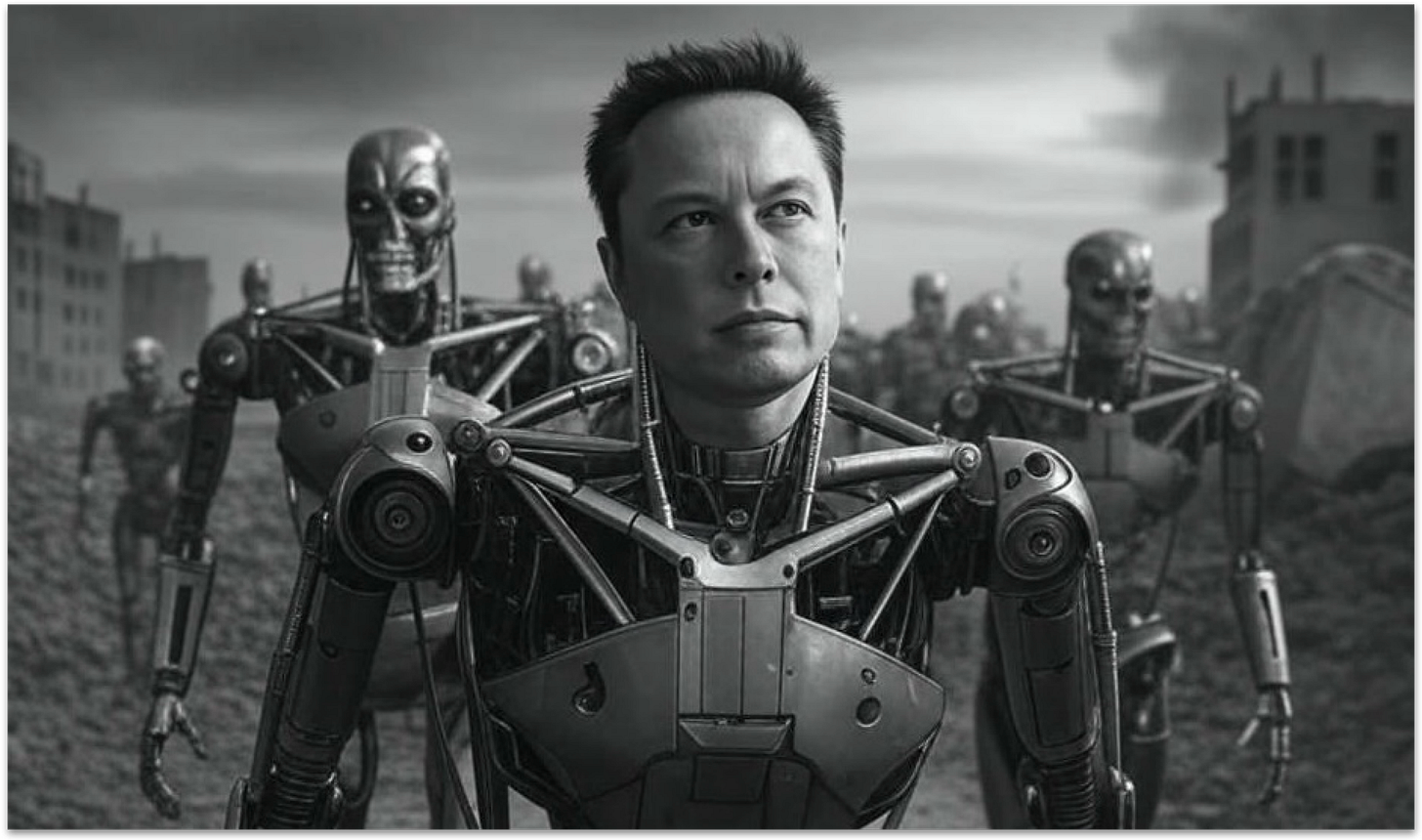
We wholeheartedly disagree with the current Corporate Media narrative that ‘Elon is Satan incarnated,’ and we recognize we stand to lose a small chunk of readers for saying such a thing. But we know him better, appreciate what he has accomplished, and encourage our readers to take him—like we all want to be taken—at face value.
We know the Elon Musk who came to Silicon Valley, like so many other immigrants, to pursue the American entrepreneurial dream. Elon started by not being able to get a job at Netscape—the first commercial Internet browser started by his now buddy Marc Andreessen—as hard as he tried. His Plan B was to start Zip2, a city guide software platform he sold to Compaq for $307 million in 1999 and personally netted $22 million for his 7% stake. Elon used these proceeds to fund X.com, which later merged into Peter Thiel's company Confinity, which was renamed PayPal and then sold to eBay for $1.5 billion in 2002.

Elon personally made ~$180 million on the PayPal deal. Elon went on to spend most of this significant windfall on funding his SpaceX and Tesla projects, both of which were inches away from going bust more than a few times
Part of Elon’s Silicon Valley legacy is that no other individual entrepreneur has been so willing to regularly put all his chips on the table and bet on himself—this is why he is the richest person on the planet!
Along the way, we also watched Elon launch the brain chip company Neuralink (2006), The Boring Company (2018), buy and turn around Twitter/X (2022), and launch what we predict will be the biggest AI company to come out of Web3—xAI. He was an early buyer of Bitcoin and helped launch Dogecoin. More recently, Elon created DOGE, the bureaucracy killing machine and the centerpiece of most of his recent corporate media attacks, including a growing stack of death threats.
The Noble Cause
We have never met a great, sustainable entrepreneur who wasn’t largely driven by some form of deep-rooted noble, if not messianic, cause. Beyond creating billions in new wealth for many people and 140,000 new well-paying jobs, Elon has earned more carbon credits than any other human and has used his rockets and satellites to achieve some great humanitarian acts.
Tesla went from being a gigantic personal gamble to proof that EVs could be sexy, practical, and lucrative. It set off a wave of auto-electrification from Detroit to Stuttgart to Shanghai, shaving off the gas-to-electric transition by years and cutting tens of millions of tons of CO2 in the process.
Since 2022, SpaceX has been providing Starlink Wi-Fi services free to Ukrainian civilians and military to maintain their Internet access during the war with Russia. SpaceX did the same for Tongans after their volcanic eruption and tsunami in January 2022 and for Americans who suffered Hurricane Helene in 2024.

Neuralink’s first human patient, Noland Arbaugh, who is paralyzed below his shoulders, was able to play chess with his mind after his brain chip implant. ‘I had basically given up on playing that game,’ he said, likening the experience to ‘using the Force.’
There is something about Elon…
Using Elon's own Grok3 'Deep Search,' we learned that Corporate Media's three biggest Elon fears are 1) Elon's influence over public discourse via X, 2) His threats of legal action potentially stifles reporting, and 3) His newfound political influence will affect media freedom. In other words, the agencies that over two-thirds of the people no longer trust do not trust Elon.🤔 Seems like a little neurotic projection going on here to us.
A Reality TV Presidency
In the historic clip above, the Boogeyman puts Elon on the spot in front of his entire cabinet and the world about what's up at DOGE and his email blast to all government employees to check their productivity. ‘The email was a pulse check. We didn't mean to be capricious,' explained the Bureaucracy Slayer.
Another Grok3 search shows the three biggest narratives about Elon corporate media is peddling right now are 1) Elon's role in DOGE is a dangerous overreach and a 'threat to democracy,' 2) He is using DOGE to boost his business interests at the public's expense, and 3) His 'chainsaw' approach to government efficiency is reckless, and risks gutting vital services and creating chaos.
According to the same xAI research, the fears about Elon that average citizens harbor strongly align with Corporate Media's concerns. The top three are 1) Elon's political influence at DOGE and its potential of harming public services, 2) His control over X and the potential for misinformation, and 3) His wealth and power and potential for unchecked influence over government and society, similar to concerns about billionaires in general.
One message we have to our readers is—when it comes to Elon and X—fear not! According to a new Pew survey, under Elon's leadership, X has become an arena where 89% of members who lean Republican and 86% of those who lean Democrat feel free to express their political views. When Elon bought Twitter, it was a failing business due to its mere 28 percent member trust rate.
Just as impressively, 66 percent of the old Twitter members leaned Democratic, whereas only 36 percent leaned Republican. Today, 48 percent of X members lean Democratic, and 47 percent lean Republican, which poetically mirrors the recent Presidential election, in which Ms. Kamala Harris earned 48.3 percent of the vote versus the Boogeyman, who captured 49.9 percent.
X is now the most bipartisan, trusted social network on the planet. It has become a supreme example of how free speech and the free market can result in happy customers and successful businesses. Corporate Media is sounding the alarm bells because X, as well as the rest of citizen journalism, is killing them. This is good news unless you miss the echo chamber of days gone by.
What about DOGE?
Our guts say we could cut 75 percent of our federal government's overhead, and no one would notice, so we admit to loving the DOGE chainsaw. To date, DOGE reports having facilitated $105 billion in cuts ($652 per taxpayer), and their goal is to reach $1 trillion ($6,211 per taxpayer) by July 2026, when their commission ends. We grew up with this kind of disruptive behavior, so we understand that real change requires making bold moves, but appreciate the anxiety this can create.
But circling back, we emphasize taking Elon (and leaders in general) at face value. To that end, we recommend watching Elon's historic pitch to the Trump Cabinet posted up top, and his 20-minute DOGE riff on a recent Joe Rogan podcast, posted below, so you can listen unfiltered to what's up directly from the bureaucracy slayer's mouth.
To save Twitter, Elon infamously cut 80 percent+ of the company's overhead. Elon described Twitter as 'basically a big group chat that doesn't really cost a lot to run if you are not interested in censoring people or acting as a glorified activist organization.' The Twitter turnaround was an infinitely smaller task than DOGE, but Elon has definitely been there and done that successfully.
"AI has the potential to cause; however small one might regard the possibility, the destruction of civilization. It's not a trivial potential outcome. We are currently headed towards a state where machines will make more decisions for us and take control of us in ways we can't turn off. It would happen like Terminator—except the intelligence will be in the data centers—but the robots will be the end effectors, and some will be moving so fast that you won't be able to see them without a strobe light."
—Elon Musk, April 2023
So why is Elon nuts? 🥜
We think Elon is nuts because we do not believe, as he does, that AI and robots will replace all jobs. We believe AI and Web3 will create a lot of jobs over the next 30 years. Great creations will always require an artist behind the wheel who will need to be paid.
We also think Elon’s revenge of the AI-powered Terminators scenario is the stuff of the science fiction books he read as a lad. So far, we have created stuff that has made us safer and live longer; there is no need to break that habit. Encouragingly, Elon recently said the odds of self-annihilation are only 20 percent. Elon says the most likely outcome of AI is ‘awesome.’

Elon also believes in the simulation hypothesis that we are likely living as they did in The Matrix. This view suggests that our reality is not a physical universe but a highly advanced computer simulation created by a more sophisticated civilization. Basically, we are all characters in a video game.😳 BTW, we are all about the physical universe 💪🏼😎
We have suggested instructing existing and displaced government workers in Web3 technologies and their applications by creating a Silicon Valley U extension program that includes guest lectures by top executives, entrepreneurs, and industry experts, as well as practical training. DOGE should be advocating this side of the equation. Business is business, but having people from the industry sharing their wisdom with willing listeners can only be a big net gain.
We can be sure everyone's got the memo on 'America First.' Now is the time to express a little humility and gratitude for our blessings, as well as compassion for the earnest and the poor. That energy would go a long way right now. Elon has professed to be a 'cultural Christian' with an admiration of Christ's teachings—now is a great time to put them into action.
For so long, we were impressed with Steve Jobs, who created and managed Apple and Pixar to spectacular success and huge cultural impact. In Silicon Valley, Elon has taken the baton from Steve and is viewed in many ways as the new idealized version of the entrepreneurial superhero. No one in Silicon Valley has any idea how he gets it all done.
Is he f*cking crazy too? Yes. He is way out on the spectrum for sure, but we forgive him for that, and we trust he is well-intentioned. As Mark Twain warned us way back when—' All loose marbles roll West!' That's the way we like it.😎🤙🏼 Any other way would be horribly dull.
‘While I'm not a particularly religious person, I'm actually a big believer in the principles of Christianity. I do believe that the teachings of Jesus are good and wise... There's tremendous wisdom in turning the other cheek. I would say I'm probably a cultural Christian.’
—Elon, who stops short of embracing the supernatural.
God is dead, but then there is cultural Christianity
Friedrich Nietzsche's famous declaration ‘God is dead’ was not merely a statement of personal disbelief but rather a recognition of the profound implications this loss of faith could have on Western society. Nietzsche believed that the decline of Christianity and its moral framework would lead to a period of nihilism, a crisis of meaning and purpose, and potential societal destabilization. (Sound familiar?).

In a 2024 interview, 'New Atheist' and world renowned British evolutionary biologist Richard Dawkins said, 'I call myself a cultural Christian. I'm not a believer, but I think it's a great pity that we've lost that religious tradition in the sense of the beautiful hymns, the beautiful language of the King James Bible, and the beautiful architecture of our cathedrals and churches.'
Ayaan Hirsi Ali, a former New Atheist figure, went further, announcing in 2023 that she'd converted to Christianity—not just culturally but theologically—citing its moral framework as a bulwark against societal decay.
Echoing Nietzsche, Elon says ‘When a culture loses its religion, it starts to become antinatalist and the population collapses due to low birth rates, potentially until we disappear. Low birth rates are a much bigger risk to civilization than global warming.’ Hence his 14 children.😅
Is there a connection between Nietzsche's prediction of nihilism and the revived appreciation for the Sermon on the Mount? Only God (if there is one) knows. We still have the power to claim back the individual identities we’ve lost to the political, corporate and social media manipulators, and recognize and encourage the good—some would say divine—in each other.😎🙏🏼
Introducing the top private Robot, Autonomous Vehicle & Drone companies for 2025! —Who are we missing?
We are pleased to present our current list of top private robotic, autonomous vehicle & drone companies for 2025. The final list will be included on our Cryptonite 300 Top Company list for 2025, which will also feature AI, blockchain and crypto top Web3 private companies. We hope to release the final Cryptonite 300 list by March 15th. 😅🙏🏼
Picking these companies is not a perfect science, in part because they are still private and, by nature, only disclose so much. In that spirit, we want to present an early look at this list to our readers so we can still get a heads up on companies we might be missing.
We are also interested in learning about companies on our list that may be sputtering and need a second look. We acknowledge that however we land, there will be great companies we will miss. But as we tell disappointed entrepreneurs—There is always next year’s list!
Please email us with any confidential input and company recommendations to TheEditor@cryptoniteventures.com 😎🙏🏼
The most challenging data to collect is a company's valuation, which we include as a best guess from a variety of sources for each company below. But keep in mind that these numbers are very dynamic and can change with new funding or if the AI market corrects, as we are betting will happen. Speaking of valuations, our standard criteria for making our top lists is ROI potential. As our readers know, we have been blowing the AI Bubble whistle for over a year now, so we need to suspend that criterion for the time being. (In other words, now is not the time to buy.😉)
The one thing we can guarantee is that this is a great list of first-generation AI companies. If our track record continues, at least 50 percent of the companies will have some form of a 'successful exit.' We also encourage readers to imagine how any of these companies affect the industries you are operating in and how you might leverage these top companies to develop new expertise and create new opportunities for success.
We look forward to hearing from anyone with a hot company tip and appreciate any feedback as always. TheEditor@cryptoniteventures.com
Robots, Autonomous Vehicles & Drones
Click on the top company links below and…
…get a Perplexity.ai Pro search result that will offer a real-time profile of each top AI company, including team member backgrounds, product and service descriptions and competitive advantage, VC funding track record and investors, and links to primary sources. Our editors also use xAI's new Grok3 for additional cross-referencing, which we also recommend.

Autonomous & Electric Vehicles & Vessles
May Mobility, Ann Arbor, MI, USA, Founded in 2017 — ($600 million)
Develops autonomous electric shuttles with a proprietary multi-sensor navigation system, enabling safe, driverless transport in controlled urban environments as a scalable mobility service. Target customers include municipalities, campuses, and businesses aiming to offer efficient, low-emission transit options.Outrider, Golden, CO, USA, Founded in 2017 — (~$1.2 billion)
Autonomous yard trucks use AI and electric power to automate distribution center operations, streamlining trailer movement and reducing human labor in logistics hubs. Target customers include logistics operators and manufacturers.

Saronic Technologies, Austin, TX, USA, Founded in 2022 — ($4 billion)
Autonomous surface vessels integrating AI, hardware, and software, enhancing maritime security and domain awareness for naval forces. Target customers include Naval and maritime forces, especially theUS. military, likely aiming to boost security and autonomy capabilities.
Waymo, Mountain View, CA, USA, Founded in 2009 — ($45 billion)
AI is for fully autonomous driving and powering a fleet of self-driving taxis and delivery vehicles. Target customers include ride-hailing users, logistics firms, and urban planners.
Autonomous Vehicle Systems & Software
Applied Intuition, Mountain View, CA, USA, Founded in 2017 — ($6 billion)
Uses AI to create realistic virtual scenarios from drive logs, offering a scalable platform for developing and testing autonomous systems. Target customers include automakers and companies developing autonomous or advanced driver-assistance technologies.
Kodiak Robotics, Mountain View, CA, USA, Founded in 2018 — ($1.2 billion)
Develops the Kodiak Driver, an adaptable autonomous trucking system with modular sensor fusion and AI, designed for long-haul efficiency and scalability across diverse freight routes. Target customers include trucking companies and logistics providers.Momenta, Beijing, China, Founded in 2016 — ($1.2 billion)
A flywheel approach with deep learning and crowdsourced data to continuously improve its Level 2+ to Level 4 autonomous driving software, offering scalable safety and adaptability. Target customers include automakers and fleet operators.

Moonshot AI, Beijing, China, Founded in 2023 — ($3.3 billion)
Works on AI for autonomous systems, with applications in robotic automation and self-driving technology. Target buyers include manufacturing and transportation industries.
Motional, Boston, MA, USA, Founded in 2020 — ($4 billion)
Combines Hyundai’s electric vehicle platforms with Aptiv’s AI-driven autonomy stack to deliver Level 4 robotaxi services, prioritizing safety and rider experience in urban settings. Target customers include rideshare operators and city governments.Oxa (Oxbotica), Oxford, England, UK, Founded in 2014 — (~$1 billion)
Universal autonomy software, Oxa Driver, leverages meta-learning and sensor fusion to enable self-driving capabilities across diverse vehicles and environments, from shuttles to trucks. Target customers include OEMs, fleet operators, and industrial firms seeking flexible autonomous solutions.Plus AI, Cupertino, CA, USA, Founded in 2016 — ($600 million)
Autonomous driving system integrates AI and scalable hardware to retrofit trucks for long-haul freight, reducing fuel costs and improving safety with minimal upfront investment. Target customers include trucking fleets and logistics companies.Pony.ai, Guangzhou, China, Founded in 2016 — ($8.5 billion)
Full-stack autonomy platform powers robotaxis and trucks with AI optimized for complex urban driving, offering seamless integration with partners like Toyota for scalable deployment. Target customers include rideshare providers and automakers deploying autonomous vehicles in dense city markets.Recogni, San Jose, CA, USA, Founded in 2017 — ($500 million)
Builds AI inference hardware for ultra-efficient visual perception, powering autonomous vehicles and robotics. Target customers include automotive companies, AV developers, and tech OEMs.
Tier IV, Tokyo, Japan, Founded in 2015 — ($342 million)
The first open-source software for autonomous driving, powering turn-key solutions that foster collaboration and rapid development. Target customers include companies and organizations in mobility and logistics, likely implementing autonomous driving technology.

Waabi founder & CEO Raquel Urtasun is an AI pioneer and visionary from Pamplona, Spain, and has been a professor at the University of Toronto since 2014. Waabi, Toronto, Canada, Founded in 2021 — ($1.2 billion)
Leverages a pioneering generative AI system, featuring the Waabi Driver and Waabi World simulator, to enable autonomous trucks to reason and adapt to diverse scenarios, powering a scalable and safe trucking solution for competitive efficiency. Target customers include logistics companies and transportation providers.
Wayve, London, UK, Founded in 2018 — ($5 billion)
Develops an AI-driven, mapless autonomous driving system using embodied AI to enable vehicles to learn and navigate real-world environments without predefined rules or HD maps. Target buyers include automotive OEMs, aiming to integrate advanced driver assistance and fully automated driving solutions.
Zipline, South San Francisco, CA, USA, Founded in 2014 — ($4.2 billion)
Leverages autonomous drone technology to enable rapid, precise delivery of medical supplies, powering its primary service of on-demand logistics for healthcare providers. Target customers include hospitals, clinics, and governments seeking efficient medical supply distribution in remote or underserved areas.
Chip Design and Manufacturing
Realtime Robotics, Boston, MA, USA, Founded in 2016 — ($200 million)
Creates AI-driven motion planning chips that enable robots to navigate dynamic environments in real time. Target customers include robotics manufacturers, automotive producers, and industrial firms.
Delivery & Shipping
Einride, Stockholm, Sweden, Founded in 2016 — ($1.4 billion)
Pioneering electric, autonomous freight pods managed by its Saga platform, integrating data-driven logistics to optimize shipping with zero-emission, driverless efficiency. Target customers include logistics firms and large shippers aiming for sustainable freight solutions.Gatik, Mountain View, CA, USA, Founded in 2017 — ($700 million)
Leverages autonomous box trucks with proprietary AI for middle-mile logistics, enabling fully driverless B2B deliveries on fixed routes for enhanced safety and cost savings. Target customers include Fortune 500 retailers and distributors.
Skydio, San Mateo, CA, USA, Founded in 2014 — ($2.2 billion)
Pioneer of AI-driven autonomous drones with obstacle avoidance, serving inspection and surveillance needs. Target customers include enterprises, public safety agencies, and infrastructure firms.

Wingcopter, Weiterstadt, Hesse, Germany, Founded in 2017 — ($300 million)
Leverages a patented tilt-rotor mechanism in its drones, allowing vertical takeoff and efficient long-range flight, powering its versatile delivery and surveying services. Target customers include healthcare providers, logistics companies, and surveyors.
Domestic Robots
The Bot Company, Palo Alto, CA, USA, Founded in 2024 — ($550 million)
Creates AI-driven household robots for tasks like cleaning, aiming for consumer-friendly automation. Target customers include homeowners, property managers, and consumer tech buyers.
Farming & Agriculture
Farmwise, San Francisco, CA, USA, Founded in 2016 — ($365 million)
Employs AI-powered vision systems in autonomous tractors to detect and remove weeds, enhancing precision agriculture. Target customers include farmers, agribusinesses, and sustainable food producers.
Monarch Tractor, Livermore, CA, USA, Founded in 2018 — ($223 million)
Offers fully electric, autonomous MK-V tractors, which enhance farm productivity and reduce environmental impact through data-driven solutions. Target customers include farmers, especially in specialty crops and land management.

Health & Medicine
Mendaera, San Mateo, CA, USA, Founded in 2020 — (~$600 million)
Combines AI with robotics to create precise, minimally invasive medical tools for procedures like biopsies. Target customers include hospitals, clinics, and medical device providers.
Hospitality Robots & Robotic Systems
Botrista, San Francisco, CA, USA, Founded in 2017 — ($600 million)
Uses AI to automate beverage creation with customizable recipes, powering robotic drink dispensers for fast, consistent service. Target customers include restaurants, cafes, and food service chains.
Industrial & Warehouse Robots
1X, San Francisco, CA, USA, Founded in 2014 — ($137 million)
Advanced humanoid robots powered by AI-driven motor control and perception systems, enabling versatile task automation in dynamic environments. Target customers include industrial firms, logistics companies, and households seeking robotic assistance.
Agility Robotics, Corvallis, OR, USA, Founded in 2015 — ($1 billion)
Creates bipedal robots with AI-enhanced locomotion and adaptability, powering their flagship robot Digit for autonomous material handling. Target customers include warehouse operators, e-commerce giants, and logistics providers.

Apptronik humanoid robot in action. Apptronik, Austin, TX, USA, Founded in 2016 — (~$1.5 billion)
Builds collaborative humanoid robots with AI-optimized dexterity and strength, designed for tasks like manufacturing and logistics support. Target customers include industrial manufacturers, defense contractors, and research institutions.
Collaborative Robotics (Cabot), San Francisco, CA, USA, Founded in 2022 — ($600 million)
Designs AI-enhanced cobots that adapt to human workflows, optimizing tasks in industrial and warehouse settings. Target customers include manufacturers, logistics companies, and small-to-medium enterprises.
Figure AI, Sunnyvale, CA, USA, Founded in 2022 — ($3.2 billion)
builds humanoid robots with advanced AI for general-purpose tasks, aiming to accelerate human labor in various industries. Target customers include manufacturing, healthcare, and retail sectors.
Locus Robotics, Wilmington, MA, USA, Founded in 2014 — ($2 billion)
Deploys AI-guided autonomous mobile robots (AMRs) that optimize warehouse picking efficiency and adaptability. Target customers include e-commerce warehouses, third-party logistics providers, and retailers.
Nimble Robotics, San Francisco, CA, USA, Founded in 2017 — ($1 billion)
Integrates AI with robotic arms to automate picking and packing, streamlining e-commerce fulfillment. Target customers include online retailers, fulfillment centers, and logistics providers.
Path Robotics, Columbus, OH, USA, Founded in 2018 — ($300 million)
Develops advanced AI-driven robotic welding systems that autonomously adapt to complex manufacturing tasks. Target customers include industrial manufacturers and fabrication companies seeking to automate and optimize their welding processes.
Pickle Robot, Cambridge, MA, USA, Founded in 2018 — (~$600 million)
Uses AI to power robotic unloading systems that handle chaotic truck deliveries with speed and accuracy. Target customers include logistics companies, distribution centers, and freight operators.
Standard Bots, Glen Cove, NY, USA, Founded in 2020 — ($300 million)
Builds affordable, AI-powered robotic arms with easy integration for small-scale automation. Target customers include small manufacturers, startups, and educational institutions.
Third Wave Automation, Union City, CA, USA, Founded in 2018 — ($400
million)
Integrates AI with forklifts for adaptive, autonomous material handling in warehouses. Target customers include logistics providers, manufacturers, and distribution centers.
Military & Defense Drones
Anduril, Costa Mesa, CA, USA, Founded in 2017 — ($13 billion)
Develops AI-powered defense technology, including autonomous drones and surveillance systems, integrated through its Lattice software for real-time battlefield awareness. Target customers include military and defense organizations, such as theUS. Department of Defense and allied governments.
Helsing, Munich, Germany, Founded in 2021 — ($4 billion)
AI-driven software and recently pivoted to hardware with the HX-2 drone, enhancing military capabilities like radar systems and swarm-based combat operations. Target customers include European militaries and defense contractors aiming to modernize with AI-enhanced systems.

Shield AI platform enables multiple drones to autonomously execute missions in electronically contested environments while reading and reacting to adversaries. Shield AI, San Diego, CA, USA, Founded in 2015 — ($2.7 billion)
Develops AI for autonomous drones that operate in GPS-denied environments, enhancing defense and rescue missions. Target customers include military agencies, law enforcement, and emergency responders.
Real Estate & Construction Robotic Systems
Built Robotics, San Francisco, CA, USA, Founded in 2016 — (~$1.2 billion)
Equips construction equipment with AI-powered autonomy, enabling machines like excavators to perform tasks without human operators. Target customers include construction firms, contractors, and heavy equipment operators.
DroneDeploy, San Francisco, CA, USA, Founded in 2013 — ($750 million)
Provides a cloud-based platform that processes drone-captured imagery into detailed 2D and 3D maps, enhancing aerial data analysis for real-time decision-making in its mapping and analytics software. Target customers include industries like construction, agriculture, and real estate.
Retail Robots
Simbe Robotics, South San Francisco, CA, USA, Founded in 2014 — ($280 million)
Uses AI-powered robots like Tally to monitor store inventory in real time, improving retail efficiency. Target customers include grocery chains, big-box retailers, and pharmacies.

Robotics Software & Systems
AMP Robotics, Louisville, CO, USA, Founded in 2015 — ($600 million)
Leverages AI-driven computer vision to identify and sort recyclables with precision, enhancing its robotic systems for waste management automation. Target customers include recycling facilities, municipalities, and waste management companies.
Bright Machines, San Francisco, CA, USA, Founded in 2018 — ($262 million)
Integrates AI-driven software with robotics to automate complex assembly lines, offering scalable manufacturing solutions. Target customers include electronics manufacturers, automotive companies, and industrial producers.
Covariant, Emeryville, CA, USA, Founded in 2017 — ($675 million)
Develops an AI "brain" for robots, enabling them to perceive and manipulate objects in unstructured environments for warehouse automation. Target customers include e-commerce fulfillment centers, logistics providers, and retailers.
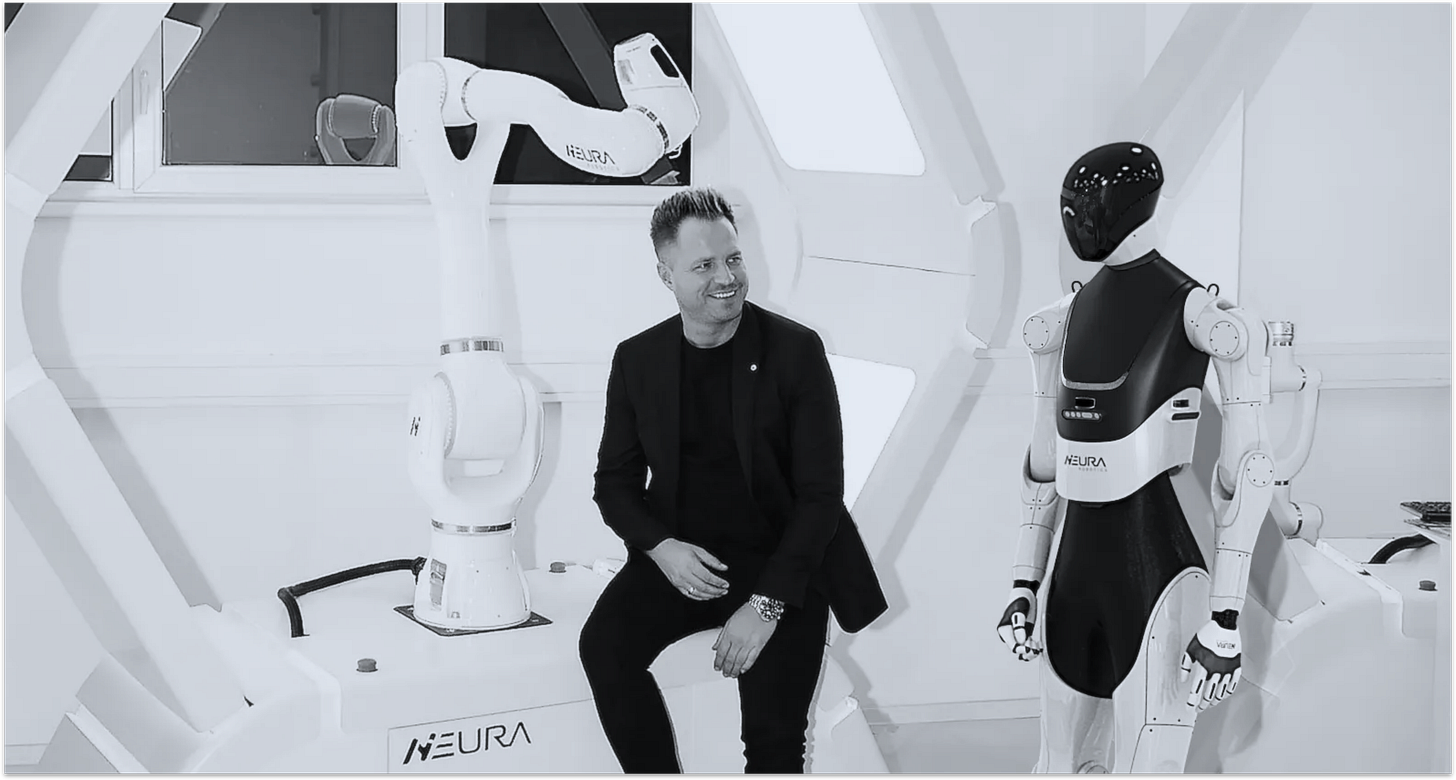
Neura Robotics (Neurala), Boston, MA, USA, Founded in 2006 — ($1 billion)
Develops AI vision software that enables real-time object recognition on edge devices, powering robotics and IoT applications. Target customers include robotics developers, defense contractors, and smart device manufacturers.
Physical Intelligence, San Francisco, CA, USA, Founded in 2023 — ($2 billion)
Develops AI algorithms that allow robots to learn and perform complex physical tasks with minimal training. Target customers include industrial automation firms, research labs, and tech innovators.
Preferred Networks, Tokyo, Japan, Founded in 2014 — ($2 billion)
Leveraging deep learning and distributed processing at the network edge to power innovative IoT solutions for automation and robotics. Target customers include industries like transportation, manufacturing, and bio-healthcare.
Skild AI, Pittsburgh, PA, USA, Founded in 2023 — ($1.5 billion)
Focuses on scalable AI models for robotic dexterity and adaptability, aiming to enable multipurpose robots. Target customers include robotics developers, industrial firms, and research institutions.
So there you have it! Again, we are presenting our readers with an early look at our robotic, autonomous vehicle & drone companies for 2025 so you can tell us the names of companies we might be missing.
Please email us with any confidential input and company recommendations to theeditor@cryptoniteventures.com 😎🙏🏼
Next post: We will introduce our top company picks in blockchain and crypto. Stay tuned!

Join us at Silicon Valley' 25—Where is Web3 taking the world? —33% off tickets until Jan. 1!
Silicon Valley ‘25 is a gathering where entrepreneurs and risk investors share how emerging Web3 innovation will create new prosperity and address the world’s most pressing issues. We also celebrate the Cryptonite 300 top Web3 companies in the world. See the current program and other SV ‘25 details here.
When and Where
—July 2025
—The Presidio Theatre Performing Arts Center (on the grounds of San Francisco’s Presidio National Park)—99 Moraga Ave., San Francisco, CA
Silicon Valley ‘25 is presented by Voting Block USA (VB USA), a 501 c3 non-profit, nonpartisan, grassroots project dedicated to educating the public on how Web3 innovation—including blockchain, AI, crypto, robotics, metaverse, and Greentech—can help create a more private, secure, efficient, and sustainable private and public sector.
Silicon Valley ‘25 is hosted and produced by Cryptonite Ventures and is supported by Silicon Valley OG Tim Draper, founder of Draper Associates and Draper University.
Introducing the Cryptonite 300 competition
Somewhere between the raw startups and the Unicorns are the blockchain, AI, and metaverse companies pioneering Web3 and offering the best equity investment ROI potential in the global Silicon Valley.
What you get behind the ‘paywall’ as a paid Cryptonite member
List and data profiles on 3,500 venture capital-backed AI/ML companies and blockchain/crypto companies, over 240 of which have made the C300 nomination list thus far.
List of the top Venture Capital funds that invest in the top 300 private Web3 companies.
List of the top Web3 Influencers as ranked by top deal relationships.
The ability to nominate companies to the Cryptonite 300 competition for 2024!
Invitations to private Cryptonite events.





